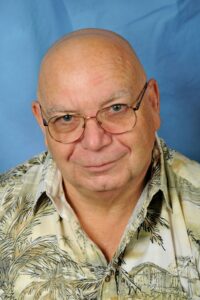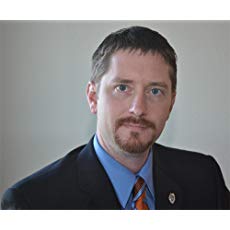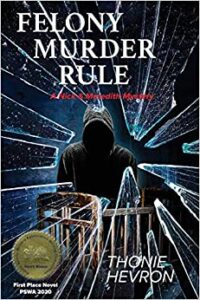
President’s Message
Greetings PSWA Members:
The Board held our mid-year meeting via Zoom on March 1st. We covered a lot in the 2 hours of the meeting.
For info, Kelli Peacock is now the newsletter editor, taking over for Marilyn Meredith, as you must already know. She was mentored by Marilyn over the last year and is up and running. Welcome, Kelli, to the board!
Discussion ranged from our 2021 conference planning, with Mike Black advising that our key-note presenters were contacted and are willing to present in 2021. Tentative date has been set for July 22-25, depending on the status of Las Vegas opening for guests. Information has it the Orleans plans to be open at 50% capacity by April, and hopefully will be at 100% by the end of May. If that does happen, then there is a good chance we can have our conference in July. Many of our members will be fully vaccinated by then, too.
If not, we will move it to a later date, such as late August, or October- there are no available dates in Sept. One way or another, we will be having a conference this year, as long as it is safe to do so, and some restrictions are lifted. As stated before, our primary concern is the health and safety of our members.
Other items we discussed, and are in the works, is a re-vamping of our webpage to make it more appealing and eye-catching. Hopefully, some graphics and photos will be added to spruce it up. Several links needed updating, such as the membership application page, the membership welcome packet, by-laws review and update, writing competition form (Barbara Hodges has completed this), automatically adding new members to the listserve, which will be re-named PSWA Email blast. Nobody really knew what the heck a “listserve” was, anyway!
We discussed the feasibility of having everyone’s renewal come due on January 1, eliminating the tedious task of sending individual notices to members every month. We also discussed standardizing the renewal to one year, eliminating the multiple year options.
There were other updates, so check out the full newsletter for more info from the board members.
Don’t forget the writing competition entries must be postmarked no later than April 15.
Suffice it to say, we have taken steps to modernize and simplify our procedures and website.
On a personal note, I have had both my Covid19 vaccinations (thanks to the Veteran’s Admin). Hopefully, many of you have, too.
I would like to say what a great Board we have. Each have contributed ideas and suggested changes at the board meeting, to make the PSWA better. All are dedicated to the PSWA and our members, and to improving our already great organization. I thank them all for their input and hard work. Kudos to Scott Decker (VP), Bob Calkin (Treasurer), Keith Bettinger (Secretary), RJ Beam (Tech Guru), Kelli Peacock (Newsletter Editor), Barbara Hodges (Writing Contest Coordinator), and Mike Black (Conference Coordinator), and of course, Marilyn Meredith.
In conclusion, rest assured the Board is working hard to have the conference this year. I am confident it will be safe to do so, and I optimistically say, SEE YOU AT THE CONFERENCE!!!
Just got notified by Bob Calkins that we have reserved July 22-25 at the Orleans for our 2021 conference! Good news!
Of course, we will make sure it is safe to have the conference then – our priority is to ensure the health and safety of our members.
If it turns out those dates aren’t possible, we will consider another time in August or October (no available dates in Sept.) and would like feedback from the membership:
Would you like the conference to take place in July if it is safe to do so, or prefer we schedule it for later in the year (early October, late August?)
Personally, I would prefer the July dates, but am not opposed to having it in early October.
Please respond on our group email- pswa@googlegroups.com with any thoughts or suggestions.
Thanks, and see you at the conference, whenever it takes place!
Stay safe,
—John Schembra
President, PSWA
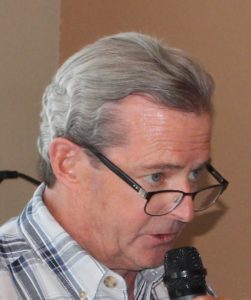
From the Vice President
The past year as the new Chairman of PSWA Membership has led me to recommend several changes during the past March’s PSWA Virtual Board Meeting. If you give me a moment, I will expand on the changes that our President mentioned in this month’s newsletter.
The renewal process needed streamlining. During 2020, renewal notices were individualized to each member. That is, I would look down the PSWA Member Roster and check for the dates when a membership expired. The dates stretched over the entire calendar year. I would send a renewal notice via email, each individualized and dated. Attached to the email was an invoice, also individualized and dated, and sequentially numbered. This could occur up to three times for each member, before sadly dropping a non-renewing member from the rolls. The whole process was a lot of work and left much room for error.
Most organizations send out renewal notices once a year, preferring January as the anniversary. Some organizations have done away with sending out notices to save on labor and costs. My preference is to standardize things with an email (pswa@googlegroups.com) Renewal Blast to the membership in January, February and a final in March. But with members having the choice of a one-, two- or three-year membership, this also becomes logistically difficult. Thus, with an eye towards efficiency, the Board is considering eliminating the two- and three-year option of joining/renewing. Feedback and suggestions are welcome.
One last note. The past year saw significant changes in a publisher and its imprints familiar to members. Rowman & Littlefield lost a top-notch managing editor, Kathryn Knigge. Kathryn was in charge of acquisitions for criminal justice and helped me enter the world of published authors. She left in the spring of 2020 when Rowman furloughed its employees due to COVID concerns. Rowman also saw the resignation of another Senior Editor of 20+ years during 2020. A Rowman imprint, Lyons Press, lost an excellent Acquisitions Editor, Stephanie Scott. I had been talking with both Kathryn and Stephanie about the best home for my next criminal justice and terrorism title. All three were great to work with and will be missed. I wish them all the luck in their new pursuits.
—R. Scott Decker, PSWA Vice President and author of Recounting the Anthrax Attacks (Rowman, 2018).
Never in my lifetime did I ever expect to see a pandemic strike the United States. I also never expected to see people walking around wearing medical masks or staying confined to their homes. Nor did I expect to see people waiting in line for vaccines to be injected into their arm. I also never expected to be any of those people I just mentioned, but here I am, sitting in the house with two shots in my arm and a car I purchased last March, sitting with less than 5,000 miles on the odometer because there was no place to go other than the drug store, the grocery store and the doctor’s office. Oh, and by the way, while at the doctor’s office, my general practitioner gave me some good news – he expects this pandemic to last another year.
I know you’re frustrated trying to make travel plans and wanting to know are we finally going to announce the PSWA conference is on and when it is going to be. With that in mind please take a moment and think how frustrating it has been and how difficult it is for your PSWA board members to try and get this year’s conference off the ground. What remains are the two questions that we just can’t answer yet – Are we having a 2021 conference and when in 2021 are we having this conference?
The answers to those questions are yes, we are planning on having the conference, and we will have the conference as soon as it is safe for our members to travel to Las Vegas to have the conference.
Being a resident of Las Vegas, I can tell you things are slowly starting to change for the better in Las Vegas. A year ago, it was a ghost town with casino doors chained shut and parking lots empty. Restaurants were either closed or working under severe restrictions. Airline travel was restricted. Middle seats on planes were not sold and remained empty on flights. Beverages to quench your thirst weren’t served on flights.
All problems are not over yet. Some casinos in Las Vegas still remain closed. Some others are operating on a part time schedule. Many employees have still not returned to work if they even have a job to go back to. The only jobs in the casinos employ that have probably increased are the people who disinfect the slot machines and gaming chairs while you play the machines.
I recently experienced some changes in the statewide dining restrictions. The week of March 11th, relatives were in town and we finally went out for dinner in restaurants, instead of having home cooked meals or takeout dinners. We had to wear masks until we sat at our table. We could have no more than four people at the table and six feet between each table. Seating capacity in restaurants just increased from 25% of their original seating capacity to 30%. Restaurant owners are anxiously waiting for a seating increase to 50%. Everyone is waiting for the college spring break crowd to arrive and see how their behavior affects the Covid 19 guidelines.
So, in answer to your questions, yes, your PSWA board is diligently working and planning on having the conference and we will have it as soon as it is safe for you to come to visit Las Vegas.
—Keith Bettinger
PSWA Secretary

Treasurer’s Report
I’m pleased to report that PSWA is financially solvent and has the necessary resources to put on an excellent conference for 2021. We’re working with the Orleans now and are hopeful that our conference can be very close-to-normal without putting anyone at risk.
I do have a request.
Many of you who registered for the 2020 conference agreed to roll your fees over to this year. (I guess since we meet in Las Vegas I should say you decided to “let them ride.”) We are exceptionally grateful for your trust and support and want to make sure you’re not missed in the transition to 2021.
Yes, we have a list. We’re even checking it twice. But I’m human, and the list involves a computer. Hiccups will occur. We would be crushed if you trusted us with your money and then showed up to find no badge, no welcome kit and perhaps even a missed opportunity to serve on a panel.
Please do not assume that because you registered and paid in 2020 you are automatically registered for 2021. If you rolled over your 2020 registration fee, we ask that you still register for 2021. Technical details are being worked out, but our plan is to have you register normally except that you’ll check a box which says you paid last year. All your information will be recorded in our system, but you won’t be re-directed to PayPal.
We hope to see everyone in Las Vegas, but most of all we want to know you’re coming. Please help us out by going through the registration process even if you rolled over from last year. Technical details to follow.
See you in Las Vegas!
—Bob Calkins
PSWA Treasurer
The last twelve months have been an interesting time to be a tech guru. It seems funny how not that long ago co-workers turned their noses up when I suggested the idea of using Zoom to hold quick meetings. An hour could be wasted driving downtown and then driving back out to the academy all just to hold a fifteen-minute meeting. Now Zoom (or other video chats) is the normal SOP for our staff to talk with administration.
As for PSWA technology, the zoom seminars have been going well. We have the next one set up for April 25th with Claire O’Brien on Forensic Anthropology and describing skeletal remains as there’s a lot of diverse cultural and environmental processes that affect bone after death. The link to the presentation will be posted on the PSWA Email Group closer to the event.
Speaking of the PSWA Email Group…. we are using a new system for our email group which in the past was called a ListServe. Yahoo had been our host but they are no longer in the ListServe business. As such we are using a service provided by Google. Some folks are saying they are not getting all the PSWA emails. Please check your spam folders, if the PSWA emails are there then mark them as “not spam”. Also, you can add a contact to your address book for the PSWA using the group’s email address (pswa@googlegroups.com).
One last note. When I took over as Tech Guru my first task was to refresh the web page. I was able to give it a little facelift and make it viewable on mobile devices. However, it needs some more life and I need your help. I ask that members who are willing to share some “action” photos. From our members who worked in public safety, I would like photos of you in uniform, or of the squad cars, ambulances, or fire apparatus. I do have photoshop so if faces or logos need to be blurred out a bit I can do that at your request. My personal email is RJ@premeditatedfiction.com.
Looking forward to seeing you in Vegas!
–RJ
PSWA Tech Guru.
I want to thank Marilyn Meredith for asking me to be the Newsletter Editor. I am not only honored, but a tad bit nervous about filling the big shoes she left behind. Once the articles started arriving, my nervousness faded.
Thank you to all who submitted the awesome articles and member news. As I began editing, I remembered how exciting and informative the PSWA newsletters are. I also realized how much I missed visiting and catching up with everyone at our conferences. It has been great having our zoom presentations, not only for the topics but also for seeing others. However, it is not quite the same. I will be glad to see everyone in person when we have our conference this year. Until then, happy writing.
–Kelli Peacock
PSWA Newsletter Editor
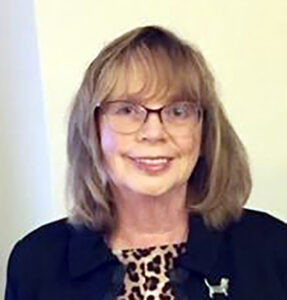 From the Writing Competition Chair
From the Writing Competition Chair
Happy Saint Patrick’s Day. May the Good Lord take a liking to you — but not too soon. My favorite Irish Blessing.
After listening to President Biden’s address last night, I am feeling confident that our 2021 conference in July will happen. I am so excited at the thought of seeing everyone. What a crazy year 2020 was. I let it play havoc with my writing. But it’s behind me, and it’s time to move forward. I don’t know about the rest of you, but I need some one-on-one time with other writers.
My friend, Maggie, and I do a one-week, writing sabbatical every year. We choose a place, it’s always driving distance away, rent a house and spend the week immersed in writing. It didn’t happen last year, and I sorely missed it. It’s my re-charge time. I plan on three a year, my week with Maggie, our conference, and my trip to Oregon with my mom to see my brother and my Aunt Joan. This year I am planning to resume all three.
April 15th will be here soon. It’s time to get your entries for the PSWA Writing Competition to me. I’ve received some, but I know there are many more of you out there. This is your chance to have your writing recognized. Our judges know great writing when they read it. When you place in our competition it is a testament to your talent. It’s great to be able to call yourself an award-winning author. Our awards are classy and look fantastic framed and displayed in your space, wherever that may be. I love having the sticker on the front of my book and it would look great on your website too. But you can’t have one if you don’t enter.
Well, I’ve got to open my WIP, dust off the pages, and get too work. See all of you soon.
—Barbara M Hodges
PSWA Writing Competition Chairperson
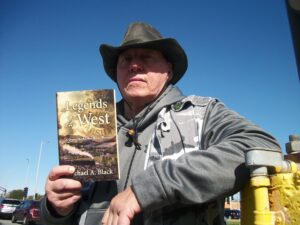
Get Ready
Okay, I’ve started this newsletter article about five different times, and I keep tossing out what I’ve written. This past year has been a bad one for everyone, but I sincerely feel that the Covid nightmare is almost over, and I’m totally hopeful that the conference can proceed as planned this year. That said, I should mention that I was hopeful last year as well. I held out this hope in the months leading up to the summer. Finally, we had little choice other than to cancel it. It became apparent that too many people who registered last year were concerned about the Covid-19 pandemic and didn’t want to risk it. The corresponding restrictions imposed by the politicians, which were originally described as “fifteen days to flatten the curve,” increased exponentially as time wore on making the cancellation of the conference last year a fait accompli. Riots and looting swept the nation. I never dreamed that life in this country would become so restricted, or so violent so quickly. Regarding the conference, the board decided that the prudent decision was to err on the side of caution. So that’s what we did. The country floundered, states locked down, toilet paper became as coveted as the new bitcoin, unending riots swept the nation, and the “expert advice” on how to stay safe changed from week to week. To say it was a very bad year is an understatement.
Now, as I write this, it’s springtime and the eighteen inches of snow on the ground here in Chicago is almost a distant and unpleasant memory. Ah, springtime, when a young man’s fancy turns to … (I’ll leave that for you to fill in yourself.) Let’s take a moment to review not only what we’ve all been through, but what we’ve learned as well.
Now, a year later, the curve seems to not only have been flattened, but the virus is on its last legs. What was that line in Gone with the Wind where Rhett Butler says to Scarlett O’Hara as Atlanta burns? “The South’s on its knees, Scarlett, and it’ll never rise again.” (I specifically chose that one because Gone With the Wind is also currently on the chopping block by the Cancel Culture PC crowd. I never dreamed that they’d tearing down statues of Christopher Columbus, Ulysses S. Grant, George Washington, and Abraham Lincoln or be banning Pepe Le Peau, Dumbo, Peter Pan, the Aristocats, or Dr. Seuss either. If this whole trend of political correctness, erasing the past, sanitizing everything to these ridiculous and unrealistic standards, etc. doesn’t bother you, then all I can say is don’t be surprised when one day they come for you.)
But I’m waxing a bit political here, and we’re always apolitical at the PSWA.
So, let’s get back to the conference.
The board is cautiously optimistic that the conference will be a go for July 22nd to 25th at the Orleans Hotel and Casino in Las Vegas, Nevada. (Why did I feel compelled to mention the state? Does anyone else know that there’s also a Las Vegas, New Mexico?) The hotel, which is fabulous, is optimistic that things will be back to normal by early summer. The CDC is saying that there are enough doses of the vaccines to have everybody in the U.S. vaccinated by May. We are considering an alternate date, just in case something unforeseen should happen, but once again, I’m cautiously optimistic.
(Egad, I used the word optimistic three times in that last paragraph. Usually, I’m very cognizant of word echoes, but these are trying times.)
Anyway, the bottom line is this: We’ll have the conference if you, all of you out there, will register and pledge to attend. I said when this whole debacle began that I’d never be critical of anyone who was taking what he or she felt were appropriate precautions by not going out in public or attending events, but dammit, it’s now time to take our lives back. I could go into the statistics provided by the CDC about survivability rates for people in various age groups who contract Covid 19 (around 99.4 % for those not in the high risk group of ages 75 plus with pre-existing health problems, and something like 96.4% survivability for those in this latter group), the effectiveness of masks (We’re celebrating the one year anniversary of Dr. Fauci first saying that masks weren’t necessary to him now saying wearing two is an absolute must, even with the vaccination), social distancing, and all that jazz. But suffice it to say, there’s been a helluva lot of erroneous information shoved down our throats this past year, and so many contradictory pronouncements by these so called “experts,” that it would be a waste of my time and yours to list them all here. The reasons for it all will be endlessly debated for the next couple of years, but the one thing you should take away from all this is to go back to thinking for yourself and making up your own mind. Look into the facts, try to get the full story, and don’t rush to judgment or subscribe to the prevailing hysteria. In the end it’s going to be up to each one of us whether we want to continue to live in fear or embrace life and start to live again.
Sure, attending the conference could be a risk, but so is getting in your car to drive to the store. Hell, even sitting in your car or house can be dangerous in certain areas here in Chicago. (We just had an 11-year-old girl shot in the face while sitting in a car at a gas station last week while her mother was out of the car.) Life itself is full of risks. Be prudent in your decisions and actions, don’t take unnecessary chances, but don’t be hoodwinked by a biased media intent on advancing its own particular agenda. We haven’t gotten to the Ministry of Truth stage of Orwell’s 1984 yet, but we’ll be edging closer if we all just continue to take these reports as gospel. I’d certainly recommend reading Alex Berenson’s The Unreported Truths About Covid 19 and Lockdowns pamphlets, which are available on Amazon. They give a detailed and unbiased examination of the pandemic and they’re eye-opening. The third one, examining the effectiveness of masks, came out this past January.
So anyway, take what I’ve said here with a grain of salt if you wish, but above all, stay positive and take charge of your life. Get vaccinated, stay healthy, get registered for the conference, and most of all, get ready. The board’s going to do its damnedest to make this next conference the best one ever.
Remember, fortune favors the bold.
I hope to see you in Vegas in July.
—Michael A. Black
PSWA Program Chair
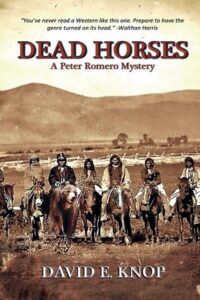 Ludlow: A Massacre Without Indians
Ludlow: A Massacre Without Indians
This is another blog article (https://davideknopbooks.com/) in my series of massacres mostly about Indian fights where the Natives won, but this massacre (a name normally attributed to Native victories) had no Indian participants.
To the contrary, the Ludlow Massacre was a murderous attack on civilian workers by anti-striker detectives and national guardsmen during the Colorado Coalfield War of 1914. The event is named after the mining town of Ludlow (now a ghost town) nestled in the foothills of the Sangre de Cristo Mountains in south central Colorado just off Interstate 25, approximately twelve miles north of Trinidad.
“Rise up!” White-haired Fire in the Mines
In Trinidad, Colorado, on September 15, 1913 at the Convention of District 15, United Mine Workers of America (UMWA), Mary G. Harris Jones (aka Mother Jones), a bespeckled woman standing five-feet tall with silver-white hair approached the podium.
In the words of Upton Sinclair, author of The Jungle (1906) and King Coal (1917), “There broke out a storm of applause which swelled into a tumult as a little woman came forward on the platform. She was wrinkled and old, dressed in black, looking like somebody’s grandmother; she was, in truth, the grandmother of hundreds of thousands of miners.”
“Rise up and strike!” the charismatic labor activist and organizer said, “Strike and stay with it as we did in West Virginia. We are going to stay here in Southern Colorado until the banner of industrial freedom floats over every coal mine. We are going to stand together and never surrender.
“Pledge to yourselves in this convention to stand as one solid army against the foes of human labor. Think of the thousands who are killed every year and there is no redress for it. We will fight until the mines are made secure and human life valued more than props. Look things in the face. Don’t fear a governor; don’t fear anybody.” Her voice dropped in pitch, the intensity something to physically feel. “You are the biggest part of the population in the state. You create its wealth, so I say, let the fight go on.
“If nobody else will keep on, I will.”
What followed was a massacre of UMWA strikers and their unarmed families by government troops and mine security guards.
Shame
Between 1884 and 1912, Colorado’s fatality rate among miners more than doubled the national average, with 6.81 miners killed for every 1,000 workers. By September 1913 – after months of sporadic strikes and years of deadly mining accidents, the UMWA had suffered enough. The union planned a strike in Colorado’s southern counties in opposition to coal mining companies’ abusive policies and blatant violation of Colorado laws governing safety, pay, and compensation. Mother Jones’s impassioned appeals to strike played no small part.
Strike!
A thunderous applause for Mother Jones’ fiery speech motivated a unanimous vote of the convention. With the full backing of the UMWA international board, the strike call went out to all miners in Southern Colorado.
On September 23, twelve thousand miners struck against three mining companies, among them the Colorado Fuel and Iron Company (CF&I), a large steel conglomerate mainly owned and controlled by John D. Rockefeller’s and Jay Gould’s heirs. Among the strikers demands were a ten-per-cent pay raise, the enforcement of an eight-hour workday, and the right to live and trade outside the company-owned town.
In the immediate aftermath of the strike’s declaration, sporadic violence broke out between strikers and the company-backed strikebreakers and mine guards. Mine management viewed the strike as a threat to profits and authorized the Baldwin-Felts Detective Agency, noted for violent repression of labor unions, to deputize local militia as reinforcements.
Later, Mother Jones, who divided her time between the violent coal fields of West Virginia and Colorado, gave another rousing speech in support of the strike on the steps of the Trinidad Post Office for which she was imprisoned for twenty days for violating court orders. Multiple attempts by strikers and Trinidad residents to liberate her by demonstrations and riots failed. When she was finally released, she saw that over 10,000 strikers and their families had been evicted from their company-owned shanties and were living in tent colonies outside the towns they had once called home.
Baldwin-Felts agents began driving around the tent colony at night, terrifying, injuring, and sometimes killing the sleeping miners and their families. Miners established night patrols to ward off the detectives, but they were no match for the “Death Special” an armored vehicle mounted with two machine guns. In response to the terrorism of the agents, the miners and their families dug pits in the earth under their tents, in which they hid at night through winter and spring to avoid being sprayed by bullets. The few occasions they fired back were used as justification for mobilizing the Colorado National Guard.
A rail route passing near the Ludlow Colony began to be used as a guard firing position to harass strikers in early October. Shortly after noon on 9 October, a striker was killed. His death came the same day four pieces of artillery arrived in the strike zone. News of the incident resulted in a strikers’ run-on guns in Trinidad. Miners’ rage was further galvanized when a nearby mine in New Mexico collapsed on 22 October, killing 263 miners. Thus, began a series of skirmishes, demonstrations, and killings.
On 24 October, the shooting deaths of several strikers by deputies in a town northwest of Trinidad sparked a gun fight in nearby Berwind Canyon. There, the strikers killed a National Guardsman.
Four days later, Colorado Governor Elias M. Ammons ordered state Adjutant General John Chase, who favored an aggressive strategy in dealing with the strikers, to deploy troops along the Colorado and Southern railway to disarm strikers and prevent further violence.
The National Guard began operations the next day by arresting strikers accused of arson and assault. After an agreement between Chase and John R. Lawson, leader of District 15 of the UMWA, the National Guard marched between the mines and tent colonies of Ludlow to implement a disarmament on both sides on 1 November. Strikers at Ludlow created a band to herald the arrival of the soldiers. The National Guard seized twenty to thirty miners’ weapons.
On the morning of 8 November, in nearby La Veta, pro-union men began harassing non-striking and strike-breaking miners (called scabs by strikers). A local miner rejected offers to join the union and barely survived an ambush. Another miner was shot in the head. That same morning, a strikebreaker was shot in the eye then arrested and held for three months on suspicion of knowing who fired the bullet. Later that day, the National Guard reported that strikers assaulted a clerk working at another mine.
The National Guard reported that on 18 November at Piedmont (now a Rockies foothills ghost town) a strike quitter’s home was dynamited. He survived. Four days later a Baldwin-Felts detective was assassinated by a striker who was then sentenced to life for the murder, a conviction ultimately overturned. Violence abated slightly in December, except for a mine guard shot and killed. On December 17, the National Guard reentered the strike zone following a brief moratorium.
1914: A Bad, Bad Year
In January 1914, General Chase implemented a harsh arrest and detention (without charges) policy of miners and sympathizers. Later, a subordinate stated in court, “It is a matter of supreme indifference to General Chase whether men arrested and held by him are guilty or innocent of a crime.” Later in the month, an unexploded bomb was located near the encampment of several National Guardsmen.
The return of Mother Jones to Trinidad on 11 January resulted in significant response. She was arrested shortly after arrival under orders of Governor Ammons and taken to San Rafael Hospital in Trinidad where she was held for nine months. Strikers attempted to liberate Jones by marching on the hospital but failed to secure her release.
The strikers lived through the high Plains winter in some twenty different tent colonies spread across Colorado’s southern coalfield. Ludlow was the largest with about 1300 residents made up of Slavs, Germans, Russians, Portuguese, French, Hungarians, Italians, Greeks, and other nationalities. Community life was well organized with strike relief, medical care, and local government for each colony. Evenings were filled with music.
The Guard’s mission was to maintain the peace, but since mine owners had agreed to pay the state for the cost of the deployment, the objective of pacification was corrupted, and the troops actually caused more trouble. The Guard troops also included many veterans of the Spanish-American War and the Philippine Insurrection who were conditioned to think of the multi-ethnic miners as inferiors.
After six months of deploying troops to the southern part of the state, and with tensions easing due to the pacifying influence of union leader Louis Tikas, National Guard troops were withdrawn to Denver in mid-April, only to return within a few days.
On a sparkling spring day, the strikers at Ludlow put on an Orthodox Easter celebration for Greek families in the tent colony. The next morning, April 20th, the National Guard opened fire on the sleeping miners. The face-off spanned fourteen hours, during which machinegun fire raked the strikers from an overlooking bluff. Guardsmen also torched the miner’s make-shift shelters. Two women and eleven children hiding in caves were asphyxiated in the fire. The confrontation resulted in the death of twenty-one persons, including three strike leaders, and the peacemaker Tikas who was captured and shot in the back by a guardsman.
Aftermath
The massacre caused local miners to take up arms en masse. As news of the deaths of women and children spread, the labor leaders issued a call to arms and urged union members to gather arms and ammunition. Subsequently, the strikers began a large-scale guerrilla war, called the Ten-Day War, against the mine guards and facilities throughout the southern coalfields. In Trinidad, the UMWA openly distributed arms and ammunition to strikers at union headquarters. Over the next ten days, 700 to 1,000 strikers attacked mine after mine, driving off or killing the guards and setting fire to the buildings. At least fifty people, including those at Ludlow, were killed during the fighting. Hundreds of Guard reinforcements were rushed to the coalfields to regain control. The fighting ended only after President Woodrow Wilson sent federal troops. The troops disarmed both sides, displacing and often arresting the militia in the process.
The United Mine Workers of America ran out of money and called off the strike on December 10, 1914. The strikers’ demands were not met, the union did not obtain recognition, and many striking workers were replaced. Furthermore, 408 strikers were arrested, 332 of whom were indicted for murder. Only strike leader John R. Lawson was convicted of murder. The Colorado Supreme Court eventually overturned the conviction. Twenty-two National Guardsmen, including ten officers, were court martialed. The officers were found responsible for the deaths of Tikas and other strikers but were acquitted of murder charges.
An estimated 69 to 199 deaths occurred during the strike and related events. Evidence from modern archeological forensic investigation largely supports the strikers’ reports of the event. Historian Thomas G. Andrews has called it the “deadliest strike in the history of the United States.” Historian Howard Zinn further described it as “the culminating act of perhaps the most violent struggle between corporate power and laboring men in American history”.
Far from Colorado, World War I began in Europe after the assassination of Austrian Archduke Franz Ferdinand on June 28, 1914. None at the time could have foreseen the ultimate effect the war would have on the worlds energy supplies and America’s entry in April 1917.
At home, the Ludlow Massacre became a watershed moment in American labor relations. Congress responded to public outrage by directing the House Committee on Mines and Mining to investigate the events. Its report, published in 1915, was influential in promoting child labor laws and an eight-hour workday.
The chief owner of the mine, John D. Rockefeller, Jr. was widely excoriated for having bankrolled the bloodbath. After the massacre, Mother Jones was invited to meet face-to-face with Rockefeller. The meeting influenced Rockefeller’s 1915 visit to the Colorado mines and introduction of long-sought reforms.
In 1918, the UMWA erected a granite monument in memory of those who died at the Ludlow Tent Colony Site. Today, the site is owned by the union.
In 1976, a magazine that focuses on news, commentary, and investigative reporting on topics including politics, the environment, human rights, health and culture and whose political inclination is variously described as liberal or progressive was named after Mary “Mother” Jones and is known today as Mother Jones. The magazine bills itself as smart and fearless, a description easily ascribed to its namesake.
On June 23, 2009, Governor William Ritter declared The Ludlow Massacre Memorial a National Historic Landmark. The site of the tent colony was dedicated a National Historic Landmark five days later.
To this day, the Ludlow Massacre is often grouped in Americans’ collective memories as Native butchery. In fact, this horrific event was a blatant case of bloodshed over corporate profits versus workers’ rights.
—David Knop

Stand down
Being a police officer in the Nation’s Capital, I have seen many demonstrations and protests. In most cases the people participating in these protests were genuine. They felt passionately about their cause. Getting arrested was not their intention, but when events lead to arrests, they were generally peaceful, non-compliant in the sense that they had to be carry to a transport or had to have some device unattached or severed. Rarely did they fight or become violent.
However, some demonstrations were specifically meant to provoke confrontations. Demonstrators brought weapons, not guns or knives, but aerosol cans with oven cleaner, bags filled with urine or animal blood, signposts specifically to be used as clubs. These people wanted to be arrested, they wanted confrontation, not necessarily to further their protest, but to get more media attention nationwide.
Today things are very different, from the clash of two opposing groups in Charlottesville, which caused the death of a participant, to the self-defense killing of young man in Florida. Protests started out as peaceful but turned into a riot of looting and assaults. A man was severely beaten by police in Los Angeles, provoked or justified, the media turned the situation into white officers targeting a black man. The officers were charged with crimes arising out the use of excessive force. After a change of venue, the officers were tried and acquitted. The acquittal resulted in a full-scale riot. Arrests were made, but in some incidences, because of the number of rioters and the lack of manpower, the police were told to stand down.
Police shootings involving white officers and black suspects became the fodder for the masses and the way to increase TV ratings or newspaper circulation. The shootings were reported without benefit of a thorough investigation. In Ferguson, Missouri, a man who had just robbed a grocery store was confronted by a police officer for walking in the middle of the street. The confrontation resulted in the man attempting to take the officer’s gun and a shot was fired. The officer was unaware of the robbery but attempted to arrest the man for assaulting the officer. The man, at first walked away, but he turned and charged the officer. The officer demanded he stop, but he didn’t, and the officer shot him. Although the media described this man as a “gentle giant,” it was obvious from his size and the previous attempt to seize the officer’s gun that the officer would have been overpowered. Without a doubt the officer would have received serious injuries, if not killed. A Grand Jury found the officer’s actions justified.
The media reported a witness said that the man had his hands up and was surrendering. The media kept reporting the man was unarmed. Rioting ensued and businesses were burned, looting commenced, and people were assaulted including police officers. Out of the violence and protest was born Black Lives Matter, with their initial banner, “hands up don’t shoot,” which was refuted, under oath, by other witnesses at the Grand Jury.
Riots broke out in Baltimore, Maryland after a druggy died in police custody. Again, businesses were looted and burned. Police cars set on fire. Mobs roamed the streets and police officers were ordered to stand down and avoid confrontation. The mainstream media again fueled the tension with unsubstantiated reports. Six police officers were subsequently indicted based on questionable evidence. Each officer was tried separately and were acquitted but lost their jobs. Morale among the officers of Baltimore City Police Department sunk to an all-time low.
Police shootings in Baton Rouge, Louisiana, Minneapolis, Minnesota, Louisville, Kentucky, Chicago, Illinois and Philadelphia, Pennsylvania sparked more violence and protests. Although, in most situations the police were found to be justified by judicial review, many still lost their jobs. Black Lives Matter started a totally discredited condemnation of the police as targeting black people. In Philadelphia and New York City even when arrests were made prosecutors refused to prosecute or no bail was set, these criminals were quickly returned to the street and continued with their actions. Mayors and Governors felt the protests were justified and ordered police to leave the protesters alone even when violence, looting and arsons resulted.
In Seattle, Washington and Portland, Oregon clashes with police occurred when groups like Antifa and Black Lives Matter combined forces to intimidate and assault other groups of peaceful protesters or demonstrations. What resulted, again city leaders wanted the police to back off. Without the fear of arrest or prosecution these groups virtually took over parts of the cities. They seized a police station and established an autonomous zone. Again, law enforcement was left out of the solution and instead because of the lack of law and order, a new battle cry evolved demanding the police department be defunded.
That cry was heard across the Nation. In Portland, the police department’s budget was reduced by 15 Million dollars. Seattle’s department budget was reduced by 3 Million and New York City reduced its police department budget by a billion dollars. Minneapolis reduced its department by 1.5 Million. Washington, D.C. city council voted to reduce the police budget by 15 million, and the Mayor gave permission for Black Lives Matter to put in yellow letters the width of 16th street, leading to the White House, Black Lives Matter and Defund the Police. The city council ordered the police to no longer use tear gas, pepper spray or rubber bullets to disperse violent mobs. What physical confrontations that took place became hand to hand fighting. Two officers suffered vision loss as a result of lasers pointed in their eyes. Any arrests made of the rioters were not prosecuted. In a survey, taken by the FOP Union 71% of the DC Police were contemplating leaving the job.
With officers losing their jobs because they were doing their job, with city governments taking away money to hire new officers, repair existing equipment or buy better equipment, with prosecutors refusing to prosecute these criminals, many officers were asking the question what am I doing here? Subject to abuse and injury, unable to do the job they swore to uphold and being vilified by the media and persuaded citizens, officers who were eligible to retire were retiring. Officers who saw the job as no longer rewarding were leaving.
The result is crime is skyrocketing. Portland has the highest number of homicides in 30 years. Arrests are down by 62%, compared to 2019, in New York City. There’s 50% increase in homicides in Washington, D.C. and Minneapolis, where 100 officers have quit, is experiencing a 20% increase in robberies and a 55% increase in arsons.
The United States Attorney General, William Barr, has labeled New York City, Seattle and Portland as “anarchist jurisdictions,” for which he intends to withhold Federal funds. He is quoted as saying, “when states and local leaders impede their own law enforcement officers and agencies from doing their jobs, it endangers innocent citizens who deserve to be protected, including those who are trying to peacefully assemble and protest. We cannot allow federal tax dollars to be wasted when safety of the citizenry hangs in the balance. It is my hope that the cities identified by the Department of Justice today will reverse course and become serious about performing the basic function of government and start protecting their own citizens.”
It is my prayer that every police officer who decides to remain on the job will do so with the attitude that not all people are against the police and realize even with the slings and arrows of outrageous fortune being put on them they are still the peacemakers, the front line of justice for all and the difference between chaos and law and order.
—Joseph B. Haggerty Sr.

Buying a Flashlight? Ask a Cop . . .
In the WIP, there’s a scene where my character, Thea Kozak, who is married to a Maine state police detective, picks up a flashlight to go down to the basement to see why the furnace isn’t working. Since her husband is a cop, I know it won’t just be any old flashlight, so I decide to do some research.
I’m at lunch with four Boston homicide detectives. When I say I’m wondering about flashlights, they all look blank. I say: You all have department issue flashlights, right? They nod. Is that what you carry? Vigorous negative shakes of all four heads. We buy our own.
A flashlight, when it is central to your work or your life may depend on it, is not a tool to be chosen lightly.
When I want to know something cop related, I use a two-step process. First, I do research. Here I start with a forum, http://www.candlepowerforums.com, and the discussion thread, “Best Flashlight for a Police Officer.” An hour later, with notes that include names like Velociraptor, T-Rex, and Void Hawk, that sound like the names of characters in an action movie, I’ve written down some plusses: Will cut through darkest tinted windows. Has a smooth, silent revolving UI. Words like “throw” and “hot spot” used by experts who know just which flashlight they prefer.
I’ve learned flashlights come with different brightness settings for different situations—low light for a quickly reading a license or doing paperwork, medium lumens or intensity for clearing a room, and high intensity for car stops where the vehicle had darkly tinted glass or for ruining the suspect’s night vision. Some flashlights even have a strobe function or come with red or blue lenses for different applications.
Many police officers take what they call the “trinity approach” –three different flashlights–primary, back-up, and the light that mounts on a weapon. Or they carry three flashlights for safety—a larger light in the car, a smaller, lighter LED flashlight on their person, and a backup in case the first two fail.
With a page of notes and newbie questions: What does UI mean and why would it be important that there be duplicate UIs, on the side and on the butt? Why did a UI need to be smooth and quiet? I turn to the officers themselves for a “mini-lecture on flashlights.” And the answers started rolling in. Staring with an explanation of “UI,” from a retired detective I’m coaching through his first mystery:
UI is a fancy way to say flashlight User Interface, or the on/off and control switch. Simply put, some flashlights have a plethora of settings, low light, medium, high and very high, also a low light red. The more settings, the more complex the light and the more times you have to press or turn the switch.
He adds an important detail: the switches need to work quietly to preserve the element of surprise.
My interview and interrogation training officer says:
There is a whole subculture on flashlights when it comes to police. I was always of the mindset that when I pushed the button, it NEEDED to come on, I wanted dependability. Back in the day when I started, guys (and gals) carried mag-lights. They always referred to them as 3C’s or 4D’s, which referred to the size and number of the batteries. A 4D was obviously 4 “D” cell batteries, which was really handy to use as a second night stick if need be. These days those are just too big and cumbersome, and don’t through enough light compared to the new LED stuff.
There are three really popular brands in the police world right now:
- Pelican 7060 LED
- Streamlight
- Surefire
I have a Pelican. They’re rechargeable plus they have a lifetime warranty. They were developed by the LAPD and they equip all their officers with them.
From a Massachusetts state police detective comes more information:
When I got on about twenty years ago, everyone got a Mag-light, a big metal heavy flashlight that guys liked because it could be used as club if need be. Everyone had that light. About ten years ago, it was more common to get a lighter and brighter flashlight. (Plus, policies and procedures frowned on using the old lights as a club since it wasn’t a device officers were trained in to use on people.) Real common was a Stinger Streamlight. The old mag light was probably halogen and the newer lights were LED. Right now, a lot of guys like lights made by a company called 5.11. The lights are very small and bright, and the battery lasts forever. Very bright, too.
From a retired Oakland detective familiar with my Joe Burgess police character:
Joe is an old-time cop. When he began police work, he was probably issued (as I was in 1980) a 3-cell flashlight. He went out and spent his own money (as did I) for a more powerful one, and the best one could do back them was a 5-cell Kel-lite. It was made out of aluminum, was heavy, and doubled as a club. I hit many a bad guy with mine. Although I long ago retired it, it is still in my coat closet and I’ve grabbed it when there’s a bump in the night.
Today, with LEDs, flashlights are much more powerful and smaller. Most uniform cops I know carry something about the size of the Streamlight Stinger.
http://www.streamlight.com/enus/product/product.html?pid=274 on their belt. Others carry the larger L20 model. Plainclothes officers will either have their old duty flashlight (such as the Stinger) in their bag and pull it out when needed. The really smart, savvy detectives (Boy Scout types who are always prepared) have a small light, such as a compact Surefire light http://www.lapolicegear.com/sutiulcovaou.html in their suitcoat pocket and a folding knife in the other pocket.
Uniformed cops carry bigger flashlights. Their duty belts support them, they’re brighter, hold a charge longer, and are more durable, especially if it’s necessary to rap a bad guy. Uniformed cops use their lights a lot and the lithium batteries used in many of the small compact lights are expensive, so they would opt for rechargeable lights, but many carry a small lithium-battery flashlight as a backup in case their main light runs out of juice.
And from my police sergeant cousin Peter, came this:
Of course, police officers work at all hours. In addition to the dark of night, we also face the dark of daytime basements, looking under seats in cars, and factory warehouses.
Mag-lite developed a rotating head of the flashlight which adjusted the beam of light to a narrow-focused spot or a broader flood area.
An issue a few years ago was bulbs. Dropping your flashlight is common, and regular bulbs would break and have to be changed. Now we are seeing powerful LED technology that give super bright light with much less power consumption. Some of the best lights ($100-$200) use the CR123 disposable lithium batteries and multiple LED bulbs. A flashlight 4 inches long and 1/2 inch thick is better than the old 3 D-cell Mag-lite.
Also, we now have weapon-mounted lights coming into common use. More than half of officer-involved shootings are in low light conditions. Small batteries and LEDs are combined for lightweight lights permanently mounted on handguns with holsters that can hold the gun with attached light. The light is now on the weapon and pointed where the weapon points instead of in one hand leaving only one hand for the weapon. The same concept is in play with patrol rifles, with weapon-mounted lights or even infrared night vision lights.
Some agencies have agency-owned flashlights installed with chargers in the cars. We have large D-cell size Mag-Lites mounted in each car and a rack charger with spares. Most tactically oriented officers carry their own good small flashlight on their belt, which provided an always-present light on any shift for dark areas. The vehicle mounted light would typically be carried at night when out of the car on a call, with the officers’ own belt-carried light as a backup at that time.
So now I know—I want a flashlight that’s small, lightweight, reliable, and powerful, with a long-lasting charge, a smooth on and off function, and a bulb that won’t easily break. Preferably rechargeable. And LED. I may want an adjustable light, depending on how I want to use it. I probably want a second flashlight in my pocket, just in case. And in case I find myself in a situation where I might confront a bad guy, I might also want one of those old-time heavy weight numbers that can double as a night stick. And it’s a hefty Mag-lite that Thea picks up when she needs to go down to a dark basement in Death Warmed Over. http://amzn.to/2Arr7KV
Who knew buying a flashlight could be so complicated?
—Kate Flora
I’m part of a Beacon Dance storytelling group sharing stories around the theme of families, traditional and chosen.
This week we spoke about a time we felt supported by our families. I relayed a story from my police academy days near Atlanta, Georgia.
You couldn’t be late or miss a day. I was petrified I wouldn’t measure up in firearms or road-ready emergency situations and be fired. As it turned out I received the academic award in 1980 and possessed a real talent for remaining calm and clear-headed when dealing with the public in emergency situations. (Firearm training didn’t come natural for me.) However, in the academy my car broke down and I couldn’t repair it. My parents weren’t able to help. I was a single divorced parent without child support. My options were limited. I was living in Clayton County about thirty miles away from the DeKalb County Police Department academy and I needed the job/career to raise my child.
I mentioned my predicament while the six female recruits showered after PT. We had ten minutes to use the only shower and dress in our uniforms in the designated small bathroom with a urinal. Recruit Cindy Fausel lived in Clayton County and offered to pick me up and that’s how I made it through the academy.
I remain in her debt and forever thankful. Cindy has remained a dear friend and an adopted family member.
In the academy photo I am second from the right in the first row, and Cindy is the only female in the second row.
—Lynne Hasse
Have Keyboard, Will Write
Or
What’s the Story About Writing for Hire?

One of my favorite old television programs is Have Gun, Will Travel. It was a highly acclaimed western that originally played on CBS from 1957 through 1963 and starred Richard Boone as Paladin, a professional gunman who could be hired to solve various problems and dilemmas. Based in a hotel in San Francisco, Paladin would regularly receive telegrams asking for his services. He would then shed his fashionable city garb in favor of an all-black outfit, including his dark hat and custom-made, long-barreled revolver. He also carried a derringer in his belt. In the customary opening scene, he would receive a telegram or find an article of interest in the newspaper and immediately plop down one of his business cards, which were emblazoned with the standard chess piece horse’s head symbolizing the knight. Printed around this figure was: Have Gun. Will Travel. Wire Paladin, San Francisco. He also wore the knight emblem on his holster, and the engaging theme song made reference to him being “a knight without armor in a savage land.” Although the show was only a half-hour in length, it was exceptionally well written. Many now-famous writers cut their teeth on these scripts, including Star Trek creator Gene Roddenberry, Mission Impossible writer Bruce Geller, and Harry Julian Fink, who penned the original Dirty Harry movie. One thing that could be counted on was that Paladin would conduct himself with the utmost professionalism and give whatever task he signed on to do his best effort. In other words, he got the job done. There are a lot of similarities in his work ethic to those of us who write for hire.
Writing for hire is essentially signing a contract to produce a specific product or good quality within a designated time frame. Depending on the contract, the writer may or may not be given credit for the finished work. There are times when a writer is specifically forbidden to even acknowledge his or her participation. The “Murder in the White House” series by Margaret Truman is a prime example. The novels were actually written by consummate write-for-hire author, Donald Bain, but the books bore only Ms. Truman’s name on their covers. To his credit, Mr. Bain never acknowledged or confirmed that he was, in fact, the true author. This only came to light after Ms. Truman passed away. Donald Bain was the quintessential pro, and the epitome of what a professional write-for-hire author should aspire to be. He was one of my mentors.
I’ve written some 40 novels, and 18 of them were write-for-hire. Most recently my write-for-hire work involves writing westerns under the name A.W. Hart. I’ve written five books in the Gunslinger series (Killer’s Choice, Killer’s Brand, Killer’s Ghost, and the forthcoming Killer’s Gamble and Killer’s Requiem). This series is set in the West of the 1880’s and follows fraternal twins, Abby and Connor Mack, while they travel on series of picaresque adventures under the watchful eye and tutelage of gunslinger River Hicks. In the first one, Gunslinger: Killer’s Choice, I had a professional gunfighter who had a card in the tradition of Paladin:
WIRE RANDALL D. LANDECKER
SANTA FE
I’ve also written eleven novels in the Executioner series under the original creator’s name, Don Pendleton. Mr. Pendleton wrote the first book in the series, The War Against the Mafia, way back in 1969. It featured a tough army sergeant, Mack Bolan, in Viet Nam who gets notified of the murder of his father. Going back to the States, Bolan discovers that organized crime is responsible for his father’s murder, and that his sister has been sold into prostitution. Bolan puts his military training to work and begins a one-man war against the Outfit. Pendleton continued writing the series, setting each in a different locale, which was worked into the title of the book. It became sort of a trademark, as well as a way for fans to keep track of the ones they’d read. Thus, Nightmare in New York, Chicago Wipeout, Vegas Vendetta, and Caribbean Kill were some of the early entries in the highly successful series. The series maintained its popularity, and Pendleton kept turning them out. He eventually sold the character to Harlequin in the mid-nineteen-nineties. He became ill and passed away in 1996, but the Executioner series continued under the authorship of numerous ghost writers for Gold Eagle, Harlequin’s action/adventure line. Each book, however, still bore the original creator’s name on the cover. The series also spanned several related action/adventure series including Phoenix Force, Able Team, and Stony Man.)
So how did this come about? I was lucky enough to get introduced to an editor and after a rather lengthy audition process, I was accepted into the fold to be one of the Executioner ghost writers. By this time, Bolan, besides being ageless, had morphed from being an urban vigilante into the American James Bond. As I mentioned, the series sprouted numerous offshoots such as the Stony Man Farm series, and the settings switched from mostly American cities to any and every place in the world. Due to the massive amount of books that have been published in the series (well over 400 novels, and counting), any potential plots had to be approved by the peerless editing staff. When I got the approval on the story idea and the sample chapters I’d submitted, I sat down and went to work. (I should add parenthetically, however, that before I completed my audition, I read several of both the old and new Executioner books. I wanted to get a feel for the character, and also the style with which they were written. Most of all, I wanted to write a novel that I felt Don Pendleton would have liked.) Part of being a successful writer for hire is being able to write in the appropriate style. There was also a “Bolan Bible” that I had to abide by. The editor, who was a joy to work with, was very specific about the do’s and don’ts of writing an Executioner novel. I won’t go into those here, but suffice it to say, I knew I was dealing with an established set of characters and had to remain true to the spirit of the series, as well as the Executioner Canon. I put everything I had into writing my first Executioner book, Sleeping Dragons. I was very proud of the finished manuscript, and the editor liked it as well.
I was very excited to be part of the Executioner line. Ironically, I recalled being a young GI in Basic Training many years ago in Fort Polk, Louisiana. The guy in the bunk next to me was reading one of the Executioner novels, and I asked him if it was good.
“It’s great,” he said. “I’ll let you read it when I’m done.”
We graduated and shipped out before he finished, so I never got to read that particular book. I wish now I could recall the title. Back then, I never in my wildest dreams would I have imagined that one day I’d be writing the series. I searched every USO box I could find for that Executioner book, but to no avail. Remembering the kindness of the USO to all of us GI’s who were young and far from home, I make it a point to donate a box of my books to that fine organization every year.
Several of my Executioner books were finalists for the Best Original Scribe Award given by the International Association of Media Tie-In Writers, and in 2018 my novel, Fatal Prescription, won the prestigious award. It was one of the high points of my writing career. As it stands, I hold the dubious distinction of having written the last published Executioner novel, Cold Fury, because as of this writing the series is on hold, but it’s rumored that it will be reappearing soon. (Remember, you heard it here first.)
The editors at Harlequin were great to work with, and although the name Don Pendleton still graces the cover, they graciously listed the actual author in the interior masthead. When writing for hire, that isn’t always the case. A number of years ago I did two novels with television actor, Richard Belzer, called I Am Not a Cop, and I Am Not a Psychic. I was hired to help the Belz, as he likes to be called, write the books, which would cast him as a character in a novel. The Belz had already written a couple nonfiction books and proved to be a total professional in the writing our two novels. At the end of the process, he insisted that my name accompany his on the covers of the books. Like I said, he’s a real class-act.
So that, in a quick nutshell, kind of sums up the perils and pleasures of writing for hire. You have to be able to come up with an idea for someone else’s characters, keeping things with the prescribed parameters, and write it in the appropriate style while keeping the prose engaging. Did I also mention that you often have to bring the manuscript in with a specified word count? Sounds like a piece of cake, right?
If you believe that, I have a bridge in Arizona to sell you. <Grin.>
I was talking with another ghost writer for the Executioner series, and he mentioned that he got called on the carpet by a continuity editor one time because he’d forgotten that although Bolan can fly a helicopter, he doesn’t know how to fly an airplane. I made a similar error once, too. I set the opening scene on a jungle mission in Columbia and had Bolan telling his Columbian counterpart to instruct the other operatives in their native language. The editor pointed out that, according to the Bolan Bible, the Executioner speaks Spanish. I thought about mentioning that I did, too, but in police work I always deferred to a native speaker when briefing operatives in their native tongue because I was always either saying, “Habla mas despacio, por favor,” (“Speak more slowly, please.”), or worrying that I’d use the wrong idiom and end up sounding like an idiot. But I kept my mouth shut and made the appropriate change. It was easily adjusted, and I was glad to do. Like I said, getting it right is imperative, and when you write for hire, you’re expected to product a specific product. I’d also like to mention again that all of the editors with whom I worked are very sharp and dedicated people, and I appreciated their invaluable assistance when writing the series. The aforementioned anecdotes underscore one of the fundamental traits that a write-for-hire author needs to have: flexibility.
I remember seeing an interview with Glen Campbell years ago, before he became ill. The interviewer asked him how he would describe himself as a singer. Campbell sat there strumming his guitar and said, “I’m what they call a pick-up artist.” As his fingers danced over the frets and strings, he went on to explain that one of his most important abilities was to be able to hear a melody being played and join in, mimicking the style and sound. Writing for hire is basically the same thing. I’ve never thought of myself as a “pick-up artist,” however. I guess saying I’m something of a chameleon might be more accurate.
So, what traits should a good write-for-hire writer have? I’ve come up with a list.
- You have to be willing to write about someone else’s characters or ideas.
- You must be ready, willing, and able to accept whatever prescribed limitations or parameters associated with the project.
- You have to be able to complete the work in the agreed upon contract deadline and often at a specific word count.
- You have to be ready to write your heart out on a manuscript knowing you may not get any credit for writing it.
- You have to be able to mimic the desired style of the project, especially if you’re continuing another author’s series.
- You have to realize that you’re writing a specific product and you must be ready to make any adjustments the editor wants.
So, as you can see, writing for hire offers a lot of challenges, but it also has numerous benefits. For one thing, making a buck as a writer has grown increasingly more difficult over the years. Many of the larger publishing houses routinely cut their midlist authors with regularity and finding a good agent who’ll stick with you is another arduous task. Some of the best writers in the business work as write-for-hire authors and represent themselves due to the connections they have made in the industry. I previously mentioned Donald Bain, who was one of the best write-for-hire authors. He once told me that a professional writer should never turn down a writing assignment and be able to write virtually anything. I’ve always tried to live up to Mr. Bain’s advice. Thus, I end here by echoing the title of this piece, with apologies to Paladin, of course:
Have keyboard, will write.
—Michael A. Black
A POLICE OFFICER’S GUIDE TO COMMON, AVOIDABLE ERRORS IN CRIME FICTION
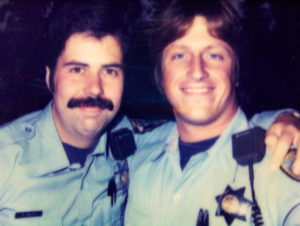 Don’t reach for the safety, authors. That’s a revolver in your hand.
Don’t reach for the safety, authors. That’s a revolver in your hand.
This may come as a surprise to the reading public, but cops enjoy a good mystery, detective story, or police procedural as much as the next avid reader of the genre. You would think we’d get enough of cops ‘n robbers, but we don’t.
Crime fiction is just that. Fiction. The caveat is that to ring true, it needs to be accurate. Even our favorite authors can damage the best of stories when they don’t do their homework or slip in tired clichés about police work.
Firearms, firefights and gunplay is fertile ground for the crime writer. We get that. We understand the need for the dramatic, though in real-life most cops will do a career without shooting someone. A gunfight is far more interesting than an hours-long, door-to-door canvas, hoping to find a witness who might shed light on an investigation.
If you want to make a real cop cringe, paint a picture of some gumshoe thumbing the safety off on his or her revolver! Revolvers don’t have safety’s! Nope, never!
We also know that handguns come in two basic flavors: revolvers and semi-automatic pistols. Revolvers have a cylinder where the bullets load, whereas semi-automatic pistols have a magazine (and we remind, not a “clip”) housing the ammo. Crime writers need to know that too.
Excellent research will reveal other differences between these handguns. Common calibers like .38, .357, and .44 are associated with revolvers. The semi-auto often runs 9-millimeter or perhaps .45, typical bore diameters. Mixing calibers and types may not be obvious to the casual reader, but if you’re a cop, it’ll stick out like a sore thumb. For more authentic writing, keep those details straight. There are plenty of firearm gurus out there who’d be happy to aid in getting it right.
Walking around with partially loaded guns is a crime fiction trait and is found in about every cop movie ever made. Police officers and detectives in novels routinely thumb the hammer back on their revolver or work the slide (or in most novel parlance, “rack the slide”) on their semi-auto to make a dramatic point. Real cops always carry their weapon loaded and ready to go. If they have to use their gun, they pull it and use it without unnecessary theatrics.
God forbid a crook should get the drop on a policeman or policewoman and have them at gunpoint. A dark moment for any cop, but we too enjoy the drama and suspense. It never rings true though, when the crook has a gun to the protagonist’s head, and the cop is cool enough to crack wise. We can tell you from experience that when your own mortality is on the line, the first thing that comes to mind is not ‘I don’t mean to interrupt, but you really should do something about that dandruff.’ Witty and terrified should not be found in the same sentence.
Another mild annoyance to those of us in this business… crime writers would do themselves a favor if they’d stop reading Miranda Rights to every desperado, they throw the handcuffs on. The detectives will do that, way down the road. You want your suspect to spill. Let them prattle on, they might say something interesting, or valuable. When you Mirandize, you’re telling the crook to shut up. It’s just not how the system works.
As one of our former partners liked to say, “You know what chaps my hide…” some cop gets jumped by two or three thugs, gets beaten half to death, and they dump him down the stairs. He pops up running and goes head long into the grill of the bad-guy’s screaming Mercedes coupe, bounces across the hood, airborne off the glass and skids across the pavement into the gutter. This is where it always gets rich. The Benz screams off into the night and the copper groggily comes to, rolls over and drags his broken self to his feet. He wipes the blood off his face with his coat sleeve, and by morning he’s in the detective bureau, drinking a cup of joe with three steri-strips over an eyebrow and a case of sore ribs.
A scene like that could only be written by someone who has never been in a real fight in his, or her life. In the real-world minor scuffles will leave you gassed and gasping for air. And you can count on being strained and sore for a few days thereafter. Most any time a blue suit is forced to strike someone with his or her fist, the likely result is a broken hand. Then, a trip to the ER, a cast and days off the job.
Here is another non-starter for the men and women of law enforcement… private eyes or attorneys who help solve cases. Never in our entire careers as detectives did, we seek, or listen to the counsel of a private investigator. If we caught a PI on the wrong side of the crime scene tape, or God forbid picking up a piece of evidence, the SOB would still be in jail!
The list can extend. When you read about some undercover lawman picking a lock in three and half seconds, cops know the writer is not informed. The only lock ever picked like that, is on some pink unicorn diary in little Annie’s bedroom.
The one-man surveillance, that’s another dead giveaway. It’s in so many books and it’s impossible to do. In most scenarios the good guy parks across the street from his suspect, makes a U-turn when the crook moves away from the curb and pulls in right behind him, surveillance on! An actual surveillance will have a team, four or five cars at least, all kinds of communications equipment up and spinning, maybe a plane in the air if you’re resourced and still you don’t always make the tail.
There’s a lot that you can get wrong when writing crime fiction, even with the best of intentions. Flip your paradigm from crime writer to lawman and do a proper investigation into your subject. You can be assured it will lend credibility and authenticity to your project.
—Chris Berg and Paul James Smith
Member News
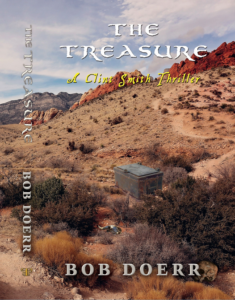 Bob Doerr is pleased to announce the upcoming release of The Treasure, the fourth book in the Clint Smith thriller series. After a successful mission in South America, Clint heads to Las Vegas on vacation and to dig up a stagecoach strong box he had found in the desert earlier but had not opened. Upon inspection, he finds some old gold coins in mint condition and some well-preserved documents. He gives the contents of the strong box to a lawyer to find buyers. One of the documents, unfortunately, creates a maelstrom of violence and murder, and puts Clint squarely in the cross hairs of some Chinese assassins. Clint leaves Las Vegas to keep out of the spotlight, only to find himself going to Alaska in an attempt to rescue a female police officer who had been assigned to protect him in Las Vegas. I expect the release date to be in late April or early May 2021.
Bob Doerr is pleased to announce the upcoming release of The Treasure, the fourth book in the Clint Smith thriller series. After a successful mission in South America, Clint heads to Las Vegas on vacation and to dig up a stagecoach strong box he had found in the desert earlier but had not opened. Upon inspection, he finds some old gold coins in mint condition and some well-preserved documents. He gives the contents of the strong box to a lawyer to find buyers. One of the documents, unfortunately, creates a maelstrom of violence and murder, and puts Clint squarely in the cross hairs of some Chinese assassins. Clint leaves Las Vegas to keep out of the spotlight, only to find himself going to Alaska in an attempt to rescue a female police officer who had been assigned to protect him in Las Vegas. I expect the release date to be in late April or early May 2021.
Thonie Hevron’s Press Release for Felony Murder Rule
aakenbaakeneditor@gmail.com
February 22, 2021
Aakenbaaken & Kent is pleased to announce the release of Felony Murder Rule by Thonie Hevron.
The story follows a pair of Sonoma County Sheriff’s detectives who put the safety of the public before themselves. Sheriff’s detective Meredith Ryan surprises an intruder leaning over her baby’s crib at home one night. Unable to catch him, she launches a dangerous journey to protect her family. The death of her father the next day steers her onto a path of deceit to discover the two incidents are connected by the mysterious man in her nursery. With Nick, her husband, they unravel her father’s involvement in a robbery/homicide years ago. To find the hidden loot, competing crime rivals plot to use her family as bargaining chips. Meredith and Nick must find the truth in the next 24 hours before the criminals close in on her family.
What others are saying:
“A real winner. The engaging characters had me rooting for Meredith and Nick all the way through this complex case that involves from a crime from the past that comes to roost in the present. Ms. Hevron’s smooth and elegant writing style, combined with the intricate plot and excellent characterization make it great reading experience.”
~ Michael A. Black, author of Legends of the West, Dying Art and Cold Fury in the Executioner series (as Don Pendleton), and Gunslinger: Killer’s Brand (as A.W. Hart).
“Felony Murder Rule hits you with all the fury of a psychopath wielding a baseball bat. The writing is sharp and the plotting precise.”
~LAPD Detective Paul Bishop, author of award-winning Lie Catchers
“Thonie Hevron’s stories are realistic, touching, and visual. She knows law enforcement, and she understands how to spin a mystery, the combination is lethal. Felony Murder Rule is yet another example of her talent, and her effective storytelling demonstrates her assimilation of emotion, motivation, and psychology in order to capture the reader.”
~C. Hope Clark, author of the award-winning Edisto Island Mysteries and The Carolina Slade Mysteries.
About Thonie Hevron
Thonie Hevron is a retired 911 dispatcher who lives in California’s Sonoma Wine Country. Her work has appeared in Beyond Borders: 2014 Redwood Writers Anthology and Felons, Flames and Ambulance Rides: Public Safety Writers 2013 Anthology. Her award-winning mystery/thriller novels, By Force or Fear, Intent to Hold and With Malice Aforethought are scheduled to be published by Aakenbaaken & Kent.
About Aakenbaaken & Kent
Founded in 2011, Aakenbaaken & Kent is an independent publisher with 50 authors under contract and over 100 titles in print. Our books are distributed by Ingram under the usual publishing industry terms and are stocked by bookstores throughout the country. Aakenbaaken & Kent authors have won or been finalists for The Edgar, The Macavity, The Lefty, ‘The New Mexico–Arizona book award (5 times), The Deadly Ink David Award (3 times), and The EPIC Award (7 times).

Marcia Rosen –
April 6, 2021, “Dying To Be Beautiful: Fashion Queen” by M. Glenda Rosen (aka Marcia Rosen) will be re-released by her publisher Level Best Books. This is the second in a mystery series set in The Hamptons, where even the murdered and suspected murderers have a sense of entitlement.
Hamptons Murder Mystery Series Asks:
What’s More Shocking, the Crimes or the Reasons People Who Commit Them?
Private Investigator Jenna Preston and her long-time friend, Detective Troy Johnson, work together to solve these murders and other crimes. The cases lead Jenna to philosophical perspectives, danger, romance (thanks to her golden retriever, Watson) as well as secondary stories of human behavior and life in The Hampton’s. Intriguing and fascinating stories of bad behavior, they recount mistakes and misdirection, because in the billion-dollar world of beauty there are those who are literally… dying to be beautiful!
The book will be available at Amazon.com, Barnes&Noble.com and independent bookstores near you! Marcia is also author of “The Senior Sleuths Mystery Series.’
www.theseniorsleuths.com/MarciagRosen@gmail.com
C.W. Saari’s, Prime Impact, is a finalist for the 2020 Foreward INDIES book awards in the
thriller/suspense category. The information is on their website.
See https://wwwforewardreviews.com/awards/books/prime-impact/
Prime Impact won first place for published fiction in the 2019 PSWA writing contest.
Marcia Rosen shares a link to a blog interview. https://donnellannbell.com/utilizing-video-marketing-to-sell-books/
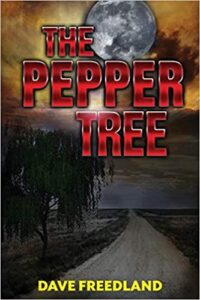 Dave Freedland’s second book, The Pepper Tree, a novel based on an actual Orange County, California landmark where several serial killers left their victims, is being featured in the April 2021 edition of UCLA Magazine, along with five other works authored by UCLA alumni and faculty.
Dave Freedland’s second book, The Pepper Tree, a novel based on an actual Orange County, California landmark where several serial killers left their victims, is being featured in the April 2021 edition of UCLA Magazine, along with five other works authored by UCLA alumni and faculty.
Amazon Link: Amazon.com: The Pepper Tree (9781938436703): David Freedland: Books
Andy Boles announces –
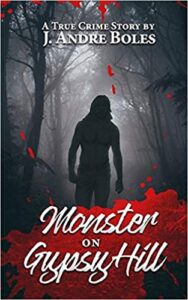 If you follow true crime, you might want to catch the first 2021 episode of ON THE CASE WITH PAULA ZAHN. Boles’ second book, MONSTER ON GYPSY HILL caught the attention of Ms. Zahn who interviewed him on March 12, 2020. The two-hour episode features that interview. The book explains how Reno authorities bungled the case and convicted the wrong person twice. Thanks to Cold Case Detective Allan Fox and others, the killer was identified, and the innocent defendant released. MONSTER illuminates the errors and machinations that gave rise to this injustice. Serial murderer Rodney Halbower was convicted on two counts of murder in San Mateo County in 2018. Reno citizens are waiting for local prosecutors to try him for the 1976 murder of College Coed Michelle Mitchell. It is believed that Halbower killed Mitchell during a crime spree leading to the deaths of at least five women.
If you follow true crime, you might want to catch the first 2021 episode of ON THE CASE WITH PAULA ZAHN. Boles’ second book, MONSTER ON GYPSY HILL caught the attention of Ms. Zahn who interviewed him on March 12, 2020. The two-hour episode features that interview. The book explains how Reno authorities bungled the case and convicted the wrong person twice. Thanks to Cold Case Detective Allan Fox and others, the killer was identified, and the innocent defendant released. MONSTER illuminates the errors and machinations that gave rise to this injustice. Serial murderer Rodney Halbower was convicted on two counts of murder in San Mateo County in 2018. Reno citizens are waiting for local prosecutors to try him for the 1976 murder of College Coed Michelle Mitchell. It is believed that Halbower killed Mitchell during a crime spree leading to the deaths of at least five women.
The episode first aired in November 2020 and remains available on Investigation Discovery.
